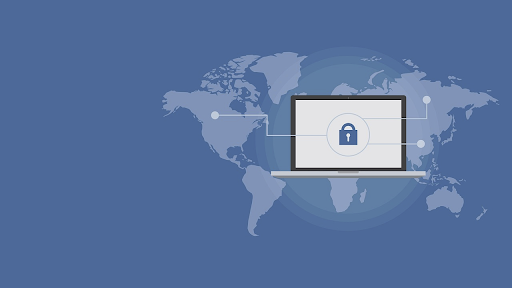
Cybersecurity is no sci-fi concept, but rather it's a practical necessity every individual and organization needs to be aware of.
As multiple options for foundational cybersecurity frameworks exist, knowing the 'what' and 'why' of these can guide you through this labyrinth efficiently. Let's dive in to explore more so you know what you need to do to protect your business’s IT assets.

Image Source: Pixabay
Understanding What a Cybersecurity Framework Is
A cybersecurity framework is, essentially, a strategic guide designed to help organizations manage their cyber risks. It aids in defining and prioritizing the steps required for reducing cybersecurity risks .
This systematic approach ensures that no crucial detail gets overlooked amidst keeping pace with evolving threats. Think of it as your battle plan against potential security breaches where every small decision can count towards big outcomes.
In even simpler terms, it's like a playbook which details out the best practices one should adopt for mitigating cyber threats effectively.

Image Source: Pexels
Thriving In The Diverse Landscape of Cybersecurity Frameworks
The cybersecurity world is laden with numerous frameworks, and the reason for this sudden proliferation is their impressive ability to strengthen an organization’s cyber resilience.
Not every business is alike, therefore using universal criteria may not always be adequate or effective. Varied cybersecurity frameworks cater to different sizes, industries, and risk profiles of businesses, making it easier for you to find one that best fits your organizational structure and needs.
Understanding these diverse options out there allows organizations to make a more strategic choice, rather than arbitrarily picking a standard security measure.
Why Does Your Business Need A Cybersecurity Framework?
No business is impervious to cyber threats and data breaches. Implementing a well-designed cybersecurity framework aids in strengthening your defenses against such threats. Here are some compelling reasons why:
It helps you map out measures needed for robust defense against varied cyberattacks.
Adopting one demonstrates your commitment to maintaining customer trust by safeguarding their confidential information.
If you operate across international borders, maintaining global standards (like ISO 27001) can facilitate smoother dealings.
Now that we're talking about frameworks that fit well with businesses of all sizes, you might want to read a guide to SOC 2 compliance . SOC 2 deals with the security issues surrounding the handling of customer data, which is something every business has to take into account today. Adherence to this standard assures stakeholders you have competent controls protecting their sensitive info, which is something worth considering when selecting a security blueprint for your enterprise.
The Growth and Emergence of Multiple Cybersecurity Frameworks
The increased dependency on digital platforms has simultaneously escalated cyber threats, necessitating robust cybersecurity. As the consequences of lax security can be catastrophically damaging both financially and reputationally, having a tailored framework is imperative. The rise in the cybersecurity landscape has led to:
More budget allocation for IT departments in businesses worldwide.
Increased attention towards developing varied frameworks catering to specific needs across diverse sectors.
An upsurge in trained professionals who specialize in different domains, like threat intelligence and data loss prevention.
With growing awareness about cyber risks, individuals and organizations are more proactive than ever before. This behavioral shift forms the crux behind multiple cybersecurity frameworks coming into inception, all designed with one common goal, which is of course enhanced internet safety and making the online world a secure place to transact or store sensitive information.

Image Source: Pexels
Choosing the Best Cybersecurity Setup: Making Sense out of Numbers
Selecting a suitable cybersecurity framework may feel overwhelming considering the wide range available. Here are some tips to help you make an informed decision:
Compatibility: Ensure the chosen framework is compatible with your organizational structure and potential threats.
Regulations: It should align with any industry regulations that you must adhere to for running your business smoothly and legally.
Flexibility: Be aware that cyber threats evolve, hence adopting a flexible framework which can accommodate such changes is crucial.
Remember, there's no one-size-fits-all solution in choosing a cybersecurity framework. Each organization has unique risks and requirements, and what works best for another may not suit yours as effectively. The idea is to thoroughly analyze before making a choice, ensuring strong defense against potential security breaches.
Distinguished Cybersecurity Frameworks to Consider
As discussed, there are plenty of established frameworks out there, so let’s touch on just a few of the main options to cast your eye over:
NIST (National Institute of Standards and Technology): This flexible framework is ideal for organizations seeking an overall risk management strategy. It incorporates guidelines aimed at improving your systems' ability to prevent, detect, and respond to cyberattacks.
ISO 27001: An international standard portraying best practices for an Information Security Management System (ISMS). Both private and government sectors widely use this due to its holistic approach towards managing information security risks.
CIS Critical Security Controls: For firms looking forward to strengthening their baseline defense, the CIS framework helps in limiting specific vulnerabilities that often face targeted exploits by attackers.
Each shines in its unique way. Depending on what you seek, whether that’s wider coverage or addressing specific threats, choosing among these can streamline your cybersecurity procedure.
Essential Tips for Navigating through Various Available Cyber-Systems
Given the diverse cybersecurity frameworks in existence, it’s crucial to be strategic when exploring your options. Here are a few tips that could guide you:
Identify Your Needs: Understand what needs protecting within your organization and contemplate on the type of threats likely to target these assets.
Research: Dearth of knowledge often leads to poor decision-making. Understanding various frameworks, their strengths and weaknesses will aid in making informed choices.
Seek Professional Guidance: Having expert advice might save you from potential loopholes or overlooks.
Consistency is key when implementing any system, and the same rules apply here. Taking small steps towards securing your digital domain can bring about substantial changes over time.

Image Source: Pexels
Final Thoughts
Decoding the realm of cybersecurity frameworks doesn't have to be daunting. Empower your defenses by embracing a robust security blueprint that resonates with your business needs.
The main thing to remember is that proactivity works better than passivity in this context, so make cybersecurity a priority today and foster trust among your clients in the long run.



